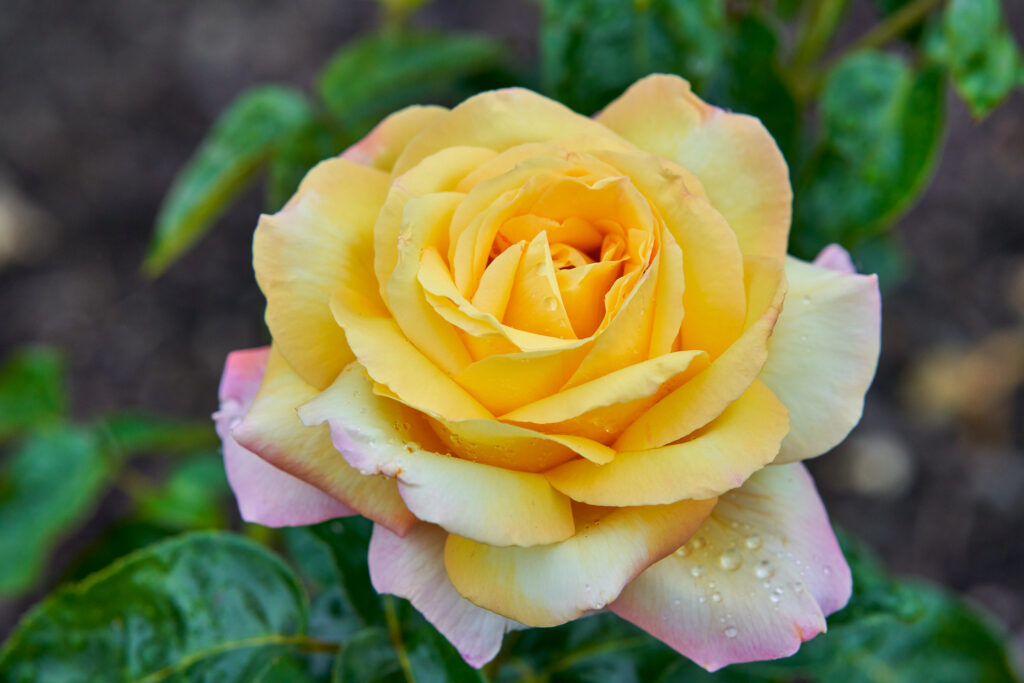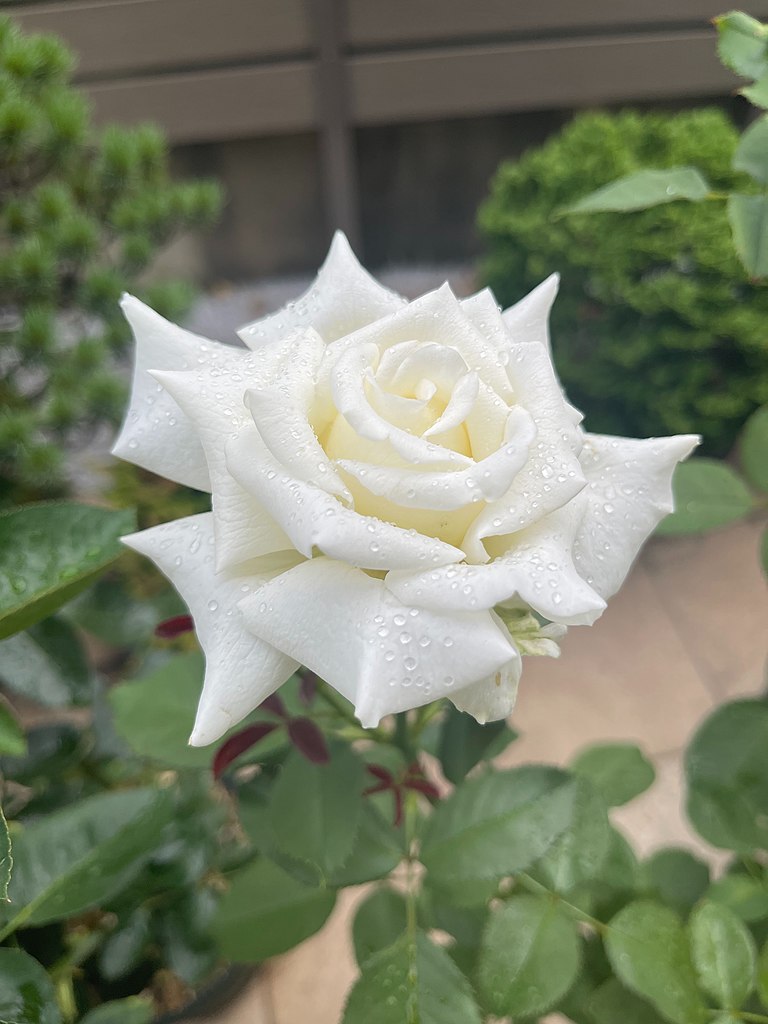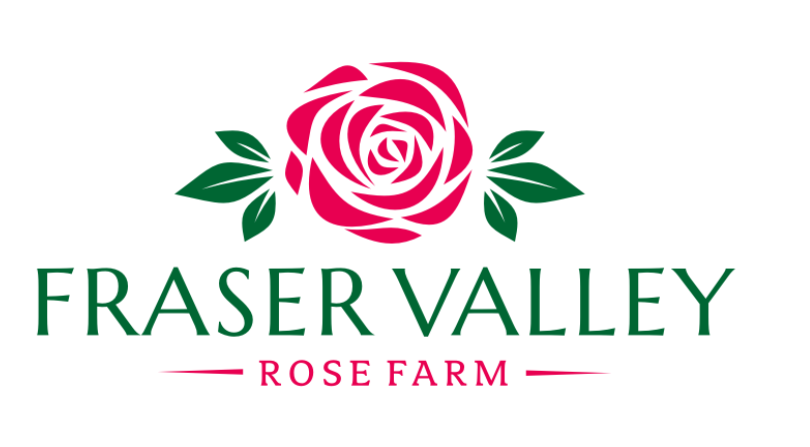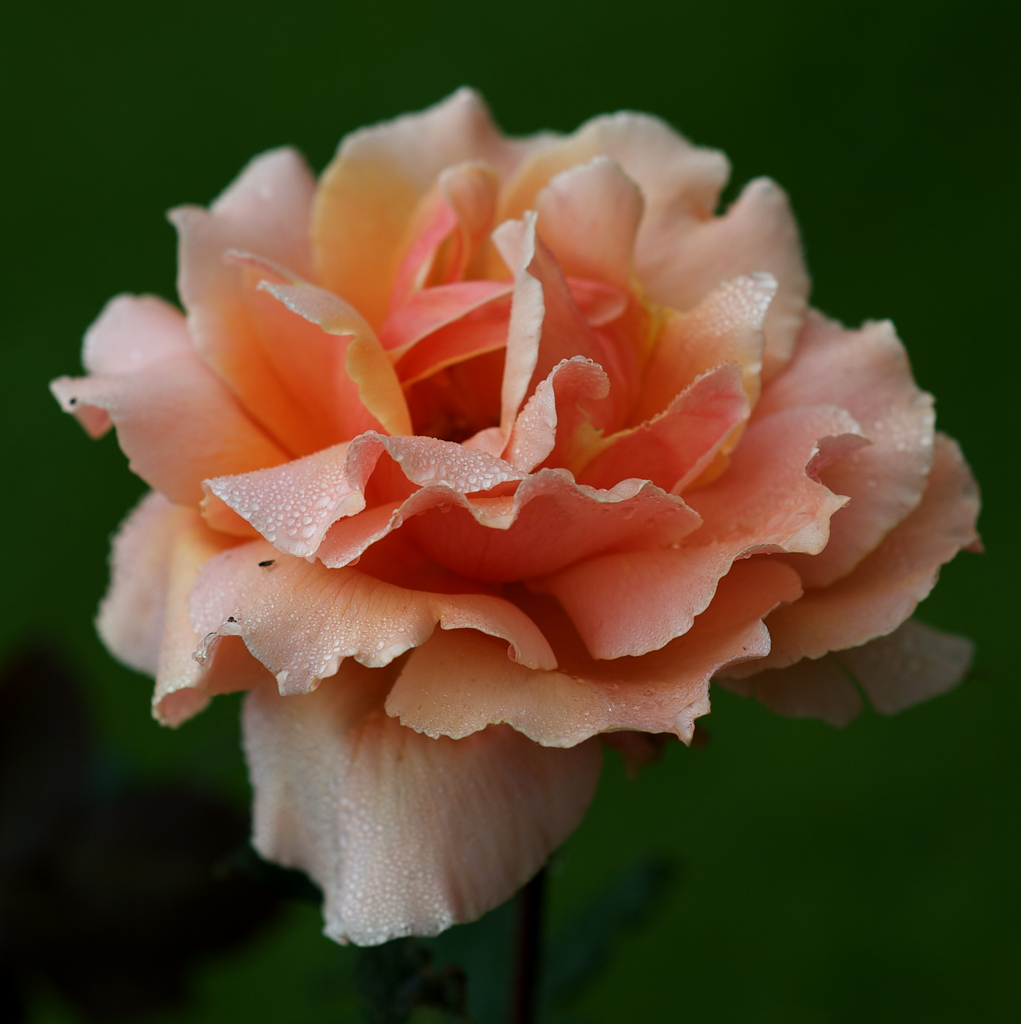Imagine I’m hosting a quiz show. I have a panel of noted rosarians ready to buzz in. I unveil cuttings from a rose variety for their inspection and challenge them to “Name that rose…”
After clicking furiously at his buzzer, contestant #1 pulls at his facial hair, shifts his baseball cap, and answers with a question: “Well which name do you want?”
And for most varieties, he’s absolutely right to ask.
For those of you who aren’t interested in my rant on the way roses are named, off you go! Read no further. I’ll leave you with a picture of a rose with a very straightforward name: ‘Just Joey’. Life is easy and uncomplicated. Have a nice day!
Now for those who choose to read on, I’ll level with you now. It’s a bit of a mess.
The problem is long-standing one, and old garden roses are not innocent in this. ‘Chapeau de Napoleon’ is also ‘Crested Moss’ and ‘Centifolia Cristata’ and several other variations including the words “moss”, “crested”, “Provence” in varying orders and languages. ‘Rosa Mundi’ and ‘The White Rose of York’ are famously named roses, but those aren’t their only names. By virtue of having been around for a long time and being grown in many gardens, these centuries-old roses tend to acquire a number of names to travel with.
So you’d think, based on that, that modern roses would be an easier issue. Not so much.
You knew ‘Peace’ would get in here somewhere. It was very successfully marketed and is well known in North America under the name ‘Peace’, but it was sold elsewhere under the names ‘Mme. A. Meilland’, ‘Gloria Dei’ and ‘Gioia’. The extra names in this case are marketing names, customized to the languages and preferences of the countries the rose will be sold in.

So you’ll never guess the solution that the breeders came up with: they added another name! And here’s the kicker. The “true” registered name of many (but not all) new roses is a nonsensical denomination with a three (capital) letter prefix followed by a some letters that may or may not have any descriptive value.
How about an example?
‘Hot Cocoa’ is a beautiful floribunda rose with a distinctively rich red-brown color, so the common name is nicely descriptive. The rose has the “real” registered name of ‘WEKpaltlez’. Much better. I’m glad the breeders took the initiative to clean this thing up!
Seriously. How would you pronounce that?
Wek – palt – lez. Or Week – pal – tleez. Take your choice. Either way, it appears to be purposely nonsensical.
I don’t argue with the purpose of having a single official registered name. It makes sense. And it would make even more sense if breeders and marketers acted with goodwill and wisdom when they chose the name. How about this? Take a good descriptive name that you really like, in whatever language you first introduce the rose, and keep that as the registered name. Any names acquired by introduction elsewhere would be footnotes, but the real name could move proudly on with the rose for as long as it’s cultivated.
This, by the way, is what International Code of Nomenclature for Cultivated Plants was meant to do: create a single name made up of “a word or words in a modern language other than Latin” in order to avoid the “the use of names that may cause error or ambiguity or throw the above disciplines into confusion”.
So why, then, did many plant breeders and marketers decide instead to resort to nonsensical names that are so atrocious that they are useless for the purposes of exhibition, garden identification, and publication? They confuse rather than enlighten. They are a burden rather than a help.
Greed. Or so goes the theory. If you have a few minutes, go on and read a more detailed article at this website. The author of the article, Tony Avent, gives way more insight into how this weirdness happened.
The short version is that some plant breeders give the nonsensical coded name to roses so that they can continue to collect royalties even after their plant patent expires (or without applying for a patent at all). Most countries will allow a breeder to patent their new introduction for somewhere in the range of 20 years as compensation for their work. After that, growers can propagate the plant without paying royalties.
The idea behind the nonsensical coded name is that rose buyers, authors, exhibitors and nurseries will use the “trade name” (like ‘Pope John Paul II’) because it’s, well, let’s face it… a lot easier, more attractive and more descriptive than the coded name (in the case of ‘Pope John Paul II’ it’s ‘JACsegra’). Then, if the rose continues to be popular past the patent period, the grower/marketer goes thermonuclear, and begins threatening everyone to pay royalties if they want to use the trademarked name.

You see, ‘Graham Thomas’ was never the name of that rose, goes the breeder’s logic. It was always ‘AUSmas’. This whole time, we were graciously allowing everyone to publish and exhibit and discuss the rose under the trade name, but that was always just a “brand” of the ‘AUSmas’ rose. Rose buyers value the brand, goes the logic, because they know that the ‘Graham Thomas’ brand of ‘AUSmas’ is grown better than all of those generic ‘AUSmas’es on the market. It has value because it distinguishes a high quality ‘AUSmas’ from a lesser quality ‘AUSmas’. Now, you could go ahead and grow and sell your ‘AUSmas’ as a generic, but if you want to use our brand name, you’d better pay up.
Now I’m not going to go on and say that this is underhanded. Heck, the pharmaceutical companies do this kind of thing all the time, and if you can’t trust big pharma to set the standard for moral behavior then…
But it doesn’t seem to me to ring true. And I say this as a nurseryman who works for a company that uses trademarks extensively, and properly I might add. Here’s how the wholesale nursery I work for uses trademarks:
My employer sells many varieties of perennials (mainly). Much of our business is in three trademarked brands. There’s a main brand of perennials, a brand of groundcovers, and a brand of alpine plants. They are sold in distinctively colored pots with large branded picture labels, and are often displayed in the garden centers with supporting marketing materials. My employer also adds value to these brands by maintaining a website on perennials, which provides information on the specific plants, as well as articles and videos and all sorts of other information for the gardener.
The idea, I think, is to add value with the brand. Long before I took the job, I looked for those distinctive pots in the garden center as an indication that I would find a large plant, a quality plant, an interesting variety, and an informative label. I’m not trying to make a commercial here. I’m just saying that the trademark did its job in this case… the job of distinguishing the plants grown by one producer from the plants grown at another, even when the individual varieties of plants may overlap.
To use a trade name as the name of a specific plant in publication, exhibition and gardens, so that in everyday usage it becomes the common name of the variety, and then to claim that it was never a common name… well, it doesn’t seem to meet the test. I don’t think, at that point, the end customer is looking for a rose marketed by a specific company when they say ‘Bonica’. I think they’re just using the common name to ask for a rose they’ve seen and enjoyed, regardless of the producer. The trademark adds no value and distinguishes nothing.
And while I’m belaboring the point, consider this comparison to literary works. It’s not a perfect comparison, but I think it’ll make my point. Authors have a right to profit from their work. So do plant breeders. Authors use their creative talents to create something new, say a novel or short story. So do breeders… in this example, a unique new rose. The law provides an author protection (copyright) so that they may profit from their work for a reasonable time frame. The law does the same (with plant patents) for breeders of plants. If a book continues to interest readers after this copyright period, it stays in the public domain, free of copyright. Same with plants. After the patent period is over, a rose may be freely propagated.
So the ploy of claiming a rose’s trade name is not it’s real name would be, in this example, like claiming that a book’s published title isn’t it’s real title. Imagine that authors and publishers caught onto this trick long ago, and Herman Melville were able to register “Moby Dick” as “MELwhldck” on some official book registry. Now, his publisher allows reviewers and schools and libraries to use the trade name “Moby Dick” so long as they add the coded “MELwhldck” in brackets somewhere in the reference. At some point, years after Mr. Melville has passed away, the copyright on “Moby Dick” comes to expire. A wonderful novel passes into the public domain, now free to be published by anyone into the future… its classic status assuring that it will nearly always be in print.
Not so fast… the publisher was still making a modest profit on printing “Moby Dick”, and now they decide to drop the bombshell. The book was never titled “Moby Dick”. That was just a trade name for a particular publisher’s whale novel, properly titled “MELwhldck”. Now everyone has to pay royalties ongoing, and that silly coded name becomes the real title of a literary classic for all time. Would this muddy the waters? Would this cause confusion? Would this cheapen literature? Would this seem dishonest? You know my opinion.
That’s my view, and it doesn’t much matter if it matches legal reality or not. My argument is not a legal one. It’s a moral and a practical one. We shouldn’t burden ourselves and future rosarians by littering these garbage names into the descriptions of entire generations of roses. Breeders, I submit to you that it would be simple decency and goodwill to give your roses a real name for general use and posterity. I know some lawyer might tell you differently, but I’m the guy on your other shoulder.
My rant is over. Just to be fair, I don’t think that every breeder is using the coded name system in order to extend patent protection. Some are simply using it because that’s “the way it’s done.” The way I read the registration instructions there’s no requirement to use the wacky coded denomination system.

